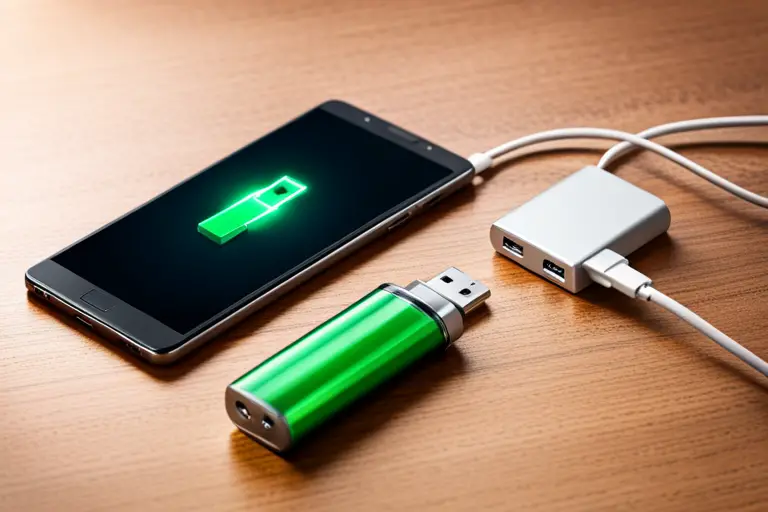Do you find yourself constantly searching for an outlet to charge your laptop? Are you frustrated with slow performance and short battery life? Luckily, there are simple ways to improve your laptop’s battery life and performance that don’t require a lot of technical know-how.
By adjusting power settings, disabling unused features, and managing background programs and processes, you can extend your laptop’s battery life and improve its performance. Additionally, cleaning your laptop’s fans and vents, upgrading hardware components, and using battery-saving apps and software can also make a significant difference.
In this article, we will explore these easy tricks and best practices for maintaining your laptop’s battery life and performance, so you can stay productive and worry-free.
Adjusting Power Settings for Better Battery Life
Want your laptop battery to last longer? You can adjust power settings to help! By default, laptops come with a balanced power plan that balances performance and battery life. However, you can customize your power plan to maximize battery life or performance depending on your needs.
To adjust power settings, go to Control Panel > Power Options. Here, you can choose from different power plans such as Power saver, Balanced, or High performance. Power saver mode reduces the laptop’s performance to save battery life, while High performance mode maximizes performance at the expense of battery life.
You can also customize the power plan by clicking on ‘Change plan settings’ and adjusting options such as turning off the display or putting the laptop to sleep after a certain period of inactivity. By tweaking these settings, you can improve your laptop’s battery life and performance.
Disabling Unused Features to Save Power
You can save power and improve your laptop’s performance by disabling any unused features. This includes turning off Bluetooth, Wi-Fi, and any unused ports such as HDMI or USB. These features consume power even when they’re not in use, so by disabling them, you can extend your battery life and improve your laptop’s overall performance.
Another feature you can disable is your laptop’s webcam. While it may be useful for video chatting, it’s not necessary for everyday use and can consume a significant amount of power.
Additionally, you can disable any startup programs that aren’t essential to your daily tasks. These programs consume resources and slow down your laptop’s performance, so disabling them can free up resources and improve your laptop’s speed and efficiency.
By taking these simple steps to disable unused features, you can improve your laptop’s battery life and performance without sacrificing functionality.
Managing Background Programs and Processes
Managing background programs and processes can be a game-changer for your laptop’s overall speed and efficiency. Many programs and applications run in the background, even when you’re not actively using them. This can significantly slow down your laptop and drain its battery life.
You can manage these background programs and processes by opening the Task Manager on your Windows laptop or the Activity Monitor on your Mac. From there, you can see which programs are running and how much of your laptop’s resources they’re using. To improve your laptop’s performance and battery life, you can close programs that you’re not actively using. This will free up your laptop’s resources and make it run faster.
You can also disable programs from running in the background altogether. This will prevent them from using any of your laptop’s resources and help conserve its battery life. By managing background programs and processes, you can optimize your laptop’s performance and get the most out of its battery life.
Cleaning Your Laptop’s Fans and Vents
To keep your laptop running smoothly, take a few minutes to clean out the fans and vents. Over time, dust and debris can build up in these areas, causing your laptop to overheat and slow down. This can also lead to a shorter battery life, as an overheating laptop requires more power to function.
To clean your laptop’s fans and vents, start by shutting down your laptop and unplugging it from any power sources. Then, use a can of compressed air to blow out any dust or debris from the vents. You can also use a soft-bristled brush to gently sweep away any remaining dust.
By keeping your laptop’s fans and vents clean, you’ll help ensure that it runs smoothly and efficiently, and you’ll extend its lifespan in the process.
Upgrading Your Laptop’s Hardware Components
Ready to take your laptop to the next level? It’s time to consider upgrading its hardware components.
Upgrading your laptop’s hardware components can improve its performance and extend its lifespan. It can also make your laptop more versatile and allow you to run more demanding software and applications.
One of the most common hardware upgrades for laptops is increasing the amount of RAM. This can significantly improve your laptop’s speed and multitasking capabilities.
Another popular upgrade is replacing the hard drive with a solid-state drive (SSD). SSDs are faster, more reliable, and use less power than traditional hard drives.
Upgrading your laptop’s graphics card can also improve its performance for gaming and video editing. However, not all laptops allow for easy graphics card upgrades, so be sure to research your laptop’s compatibility before making any purchases.
Overall, upgrading your laptop’s hardware components can be a cost-effective way to improve its performance and prolong its lifespan.
Using Battery-Saving Apps and Software
You can easily extend your laptop’s battery life by using apps and software specifically designed to conserve power. One such app is BatteryBar, which displays your laptop’s battery status and usage in real-time, allowing you to monitor how much power you have left and how long it will last. It also provides useful information on how much time is left until your battery is fully charged or depleted.
Another useful app is Power Plan Assistant, which allows you to create custom power plans tailored to your specific needs. This app lets you control various power settings, such as the brightness of your screen, the amount of time your laptop takes to go into sleep mode, and the performance of your CPU. By making these adjustments, you can reduce the amount of power your laptop uses, thus extending your battery life and improving its overall performance.
Best Practices for Maintaining Your Laptop’s Battery Life and Performance
Maintaining your laptop’s battery and performance is crucial for ensuring a seamless and efficient computing experience. One of the best practices to follow is to keep your laptop cool. Overheating can not only damage the internal components of your laptop but also cause your battery to drain quickly.
To prevent overheating, make sure your laptop is not placed on soft surfaces such as pillows or blankets, which can block the vents and cause the internal temperature to rise. Instead, place your laptop on a flat and hard surface such as a desk or table. You can also invest in a cooling pad that can help dissipate the heat and keep your laptop’s temperature in check.
Another way to maintain your laptop’s battery life and performance is to optimize your power settings. By default, laptops come with a balanced power plan that tries to balance performance and battery life. However, you can customize the power settings to suit your needs.
For instance, you can switch to the power saver plan when you are working on tasks that do not require much CPU power or graphics performance. Similarly, you can switch to the high-performance plan when you need your laptop to perform at its best. By optimizing your power settings, you can extend your laptop’s battery life and improve its performance.
Frequently Asked Questions
What is the average lifespan of a laptop battery?
The average lifespan of a laptop battery is typically around 2-4 years. However, this can vary depending on usage and the quality of the battery. It is important to properly maintain and care for your battery to extend its lifespan.
Can using an external mouse or keyboard drain laptop battery faster?
Yes, using an external mouse or keyboard can drain your laptop battery faster because it requires additional power to operate. It’s best to disconnect them when not in use to conserve your battery life.
Is it safe to leave your laptop plugged in all the time?
Leaving your laptop plugged in all the time is generally safe, but it can lead to decreased battery life over time. It’s best to unplug your laptop once it’s fully charged and avoid overcharging.
How often should you clean your laptop’s fans and vents?
You should clean your laptop’s fans and vents every three to six months. Over time, dust and debris can build up, causing your laptop to overheat and reducing its performance.
Will upgrading your laptop’s hardware components significantly improve battery life?
Upgrading your laptop’s hardware components may not significantly improve battery life, as it depends on the type of component and how power-hungry it is. Consider optimizing settings and using power-saving features instead.
Conclusion
So, there you have it – a few simple ways to improve your laptop’s battery life and performance. By adjusting your power settings, disabling unused features, managing background programs, and cleaning your laptop’s fans and vents, you can ensure that your laptop runs smoothly and efficiently.
Additionally, upgrading your laptop’s hardware components and using battery-saving apps and software can help you get the most out of your device.
Remember, the key to maintaining your laptop’s battery life and performance is to take care of it regularly. By following these best practices, you can ensure that your laptop runs smoothly and efficiently for years to come.
So, go ahead and try out these tips and see the difference for yourself!

Hey there, tech enthusiasts! I’m your go-to content writer, delving into the fascinating world of technology hacks. Get ready to unlock mind-blowing secrets and discover innovative solutions through my engaging and insightful blogs.


